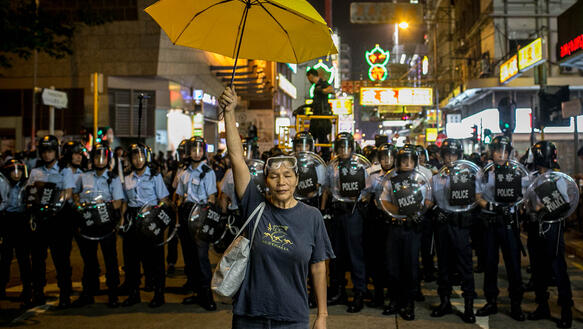DEINE SPENDE KANN LEBEN RETTEN!
Mit Amnesty kannst du dort helfen, wo es am dringendsten nötig ist.
DEINE SPENDE WIRKT!
Bevorstehende Hinrichtung

Edward Bell is due to be executed in Virginia at 9pm local time on 19 February. He was sentenced to death in 2001 for the murder of a police officer in 1999. Edward Bell, who was convicted on largely circumstantial evidence, has consistently maintained his innocence of the murder. There are serious questions about the quality of his legal representation at trial, and his appeal lawyers argue that he may have mental retardation.
Sachlage
On the evening of 29 October 1999, Sergeant Richard Timbrook, a 32-year-old white officer, was working with two probation and parole officers in the city of Winchester in north Virginia. An incident arose in which Sgt Timbrook chased a man who had fled from the officers when they approached, and the Sergeant was shot in the head as he was climbing a fence between two houses. The next morning, police found Edward Bell hiding in the basement of a house near the scene of the shooting. He told the police that he had fled when people he did not realize were law enforcement officers had got out of their car and started running towards him. He denied shooting Sgt Timbrook, saying instead that he had hidden when he heard the gunshot. The following day, a gun was found under the porch of the house where Bell had been found. Forensic testing established that this was the gun that had fired the bullet that killed the officer. DNA recovered from the gun was a mixture from at least three people, and neither excluded nor identified Bell.
Edward Bell’s clemency petition presents Governor Timothy Kaine with doubts about the reliability of Bell’s conviction. An officer who caught sight of the person who shot Sergeant Timbrook saw a person who was dressed in black, but when Edward Bell was arrested he was wearing a jacket with reflective stripes on its sleeves that "lit up like a Christmas tree" according to police who saw him running away from Sgt Timbrook. After Bell was arrested, dozens of officers had conducted a meticulous day-long search for the murder weapon, but none was found. The crime scene was then left unsecured for several hours, after which police returned and, according to the clemency petition, "were able to find the gun in a most obvious location lying near a bush several feet from where Bell was found hiding". The clemency petition also draws attention to evidence that there was another person seeking to evade police in the area at the time of the shooting who was never investigated.
The prosecution’s final witness had been in jail with Edward Bell before the trial. This witness, Terry Johnson, testified (not under oath) that Bell had confessed the murder to him and that he, Johnson, had not been offered anything by the state in return for his testimony. He has since signed an affidavit under oath that when originally approached by the authorities, he had told them repeatedly that he had no information on the case. His affidavit states that the prosecutor promised a reduction in his own prison sentence, as well as relocation to a more favourable prison, and contact visits with his family and girlfriend.
The failure of Bell’s trial lawyers to investigate and present mitigating evidence at the sentencing phase of the trial left the jury ill-informed to make their life-or-death decision. The lawyer who was primarily responsible for developing the mitigation case had never handled a capital case before. A mitigation investigator with experience in over 200 cases who was hired to work on the case later described it as "the most disorganized case" she had ever attempted to work on. The trial lawyers consistently failed to respond to her efforts to carry out her work.
The mitigation case presented at the trial consisted of two witnesses, the defendant’s sister and father, whose testimony amounted to less than seven pages of transcript. Moreover, a federal District Court judge noted that the defence lawyers "did not ask Bell’s sister or father a single question about Bell’s background, his relationships with his family, his children, or any other potentially mitigating factors." Indeed, the prosecutor emphasised in his closing argument that the defence had not "produced one shred of evidence of mitigation". Bell’s clemency lawyers have presented to Governor Kaine an array of character witnesses from whom the jurors never heard, and who "would have provided a much more accurate and balanced understanding of Bell’s life". One of the jurors later signed an affidavit in which she said: "It was very important for me to hear about Eddie Bell’s background. I was undecided at sentencing and I wanted to hear something, anything about Eddie Bell… We were looking from something mitigating, some reason not to sentence him to death, but we were given nothing by his lawyers and we felt his lawyers did him a disservice". After an evidentiary hearing, the US District Court concluded in 2006 that Bell had received deficient representation and that the Virginia Supreme Court’s ruling to the contrary was unreasonable. However, under the restrictive standards of US law on this issue, the judge upheld the state Supreme Court’s conclusion that Bell had not been prejudiced by his trial counsel’s performance. Edward Bell’s clemency petition also presents evidence that he may have mental retardation. If so, his execution would violate US constitutional law, under the 2002 US Supreme Court ruling Atkins v. Virginia. The Virginia Supreme Court dismissed Bell’s mental retardation claim as "frivolous". His lawyers have since obtained further expert opinions that Bell’s records indicate that he may have mental retardation. However, the courts have denied him a hearing on this issue.
[BACKGROUND INFORMATION]
Amnesty International opposes the death penalty in all cases, unconditionally. To end the death penalty is to abandon a destructive, diversionary and divisive public policy that is not consistent with widely held values. It not only runs the risk of irrevocable error, it is also costly, to the public purse as well as in social and psychological terms. It has not been proved to have a special deterrent effect. It tends to be applied in a discriminatory way, on grounds of race and class. It denies the possibility of reconciliation and rehabilitation. It promotes simplistic responses to complex human problems, rather than pursuing explanations that could inform positive strategies. It prolongs the suffering of the murder victim’s family, and extends that suffering to the loved ones of the condemned prisoner. It diverts resources that could be better used to work against violent crime and assist those affected by it. It is a symptom of a culture of violence, not a solution to it. It is an affront to human dignity. It should be abolished.
There have been 1,145 executions in the USA since judicial killing resumed there in 1977, 102 of them in Virginia. There have been nine executions in the USA so far in 2009, none in Virginia.
[RECOMMENDED ACTION]
PLEASE SEND APPEALS TO ARRIVE AS QUICKLY AS POSSIBLE, IN YOUR OWN WORDS
-
explaining that you are not seeking to excuse the murder of Sergeant Richard Timbrook, or to minimize the suffering caused by his death;
-
expressing concern at the low quality of legal representation Edward Bell received at trial, particularly at the sentencing phase, which left the jury ill-informed to make its life-or-death decision;
-
expressing concern at evidence that Edward Bell may have mental retardation but has been denied the opportunity to develop and present this evidence in court;
-
noting that there are lingering doubts about the reliability of Edward Bell’s conviction;
-
noting that the power of executive clemency in capital cases exists precisely to prevent irrevocable injustices that the courts have been unwilling or unable to remedy;
- calling on Governor Kaine to grant clemency to Edward Bell.
(you may also sign online petition at http://www.thepetitionsite.com/4/Clemency-For-Eddie).
[APPEALS TO]
Governor Timothy M. Kaine Office of the Governor, Patrick Henry Building, 3rd Floor, 1111 East Broad Street, Richmond, VA 23219, USA Fax: 001 804 371-6351 -
Email: http://www.governor.virginia.gov/AboutTheGovernor/contactGovernor.cfm. Salutation: Dear Governor
COPIES TO BOTSCHAFT DER VEREINIGTEN STAATEN VON AMERIKA Herrn John Monroe Koenig, Gesandter-Botschaftsrat (Geschäftsträger a.i.), Pariser Platz 2, 10117 Berlin Fax: 030-83 05 10 50 E-Mail: über http://germany.usembassy.de/email/feedback.htm
PLEASE SEND APPEALS IMMEDIATELY.
